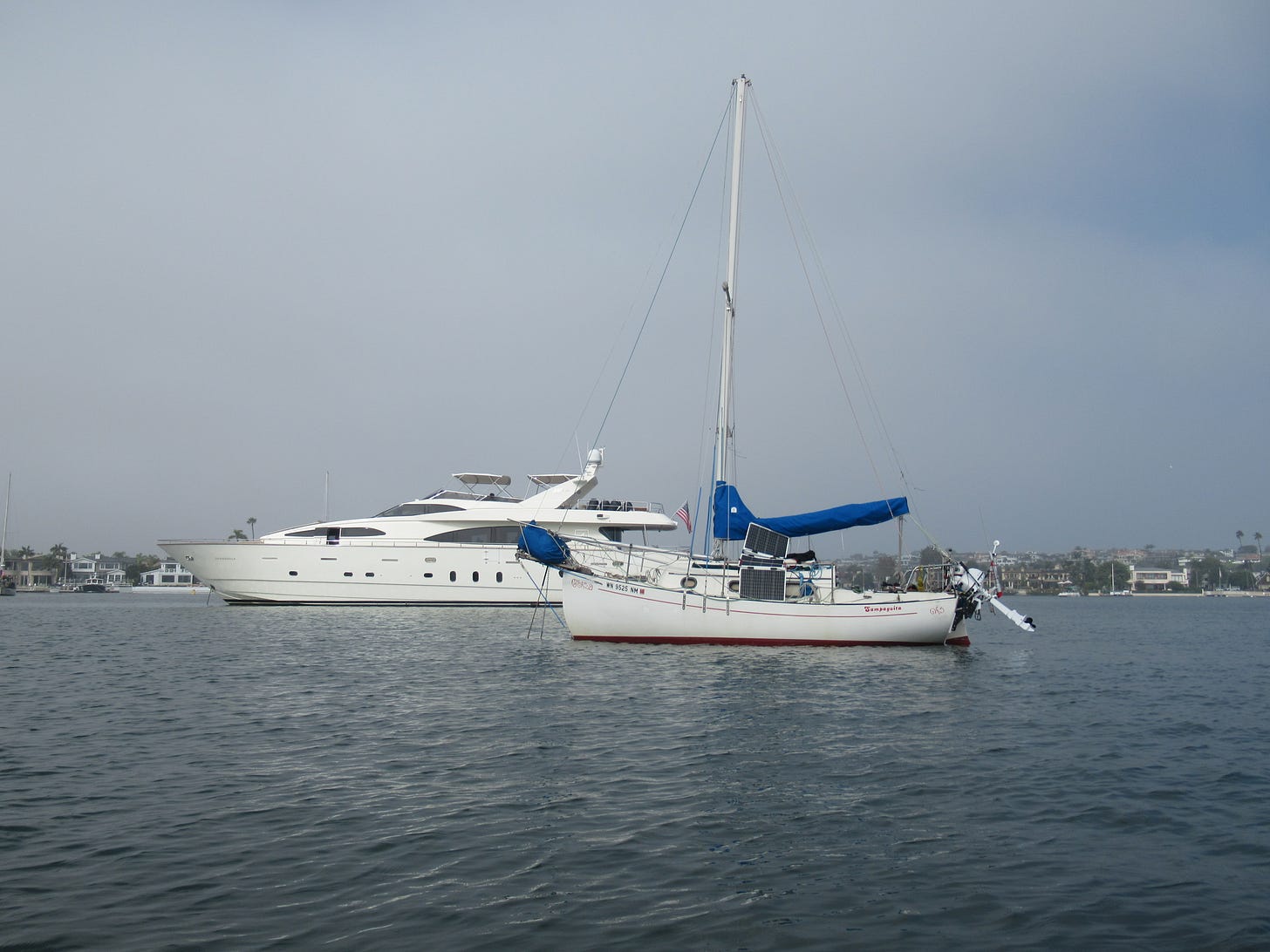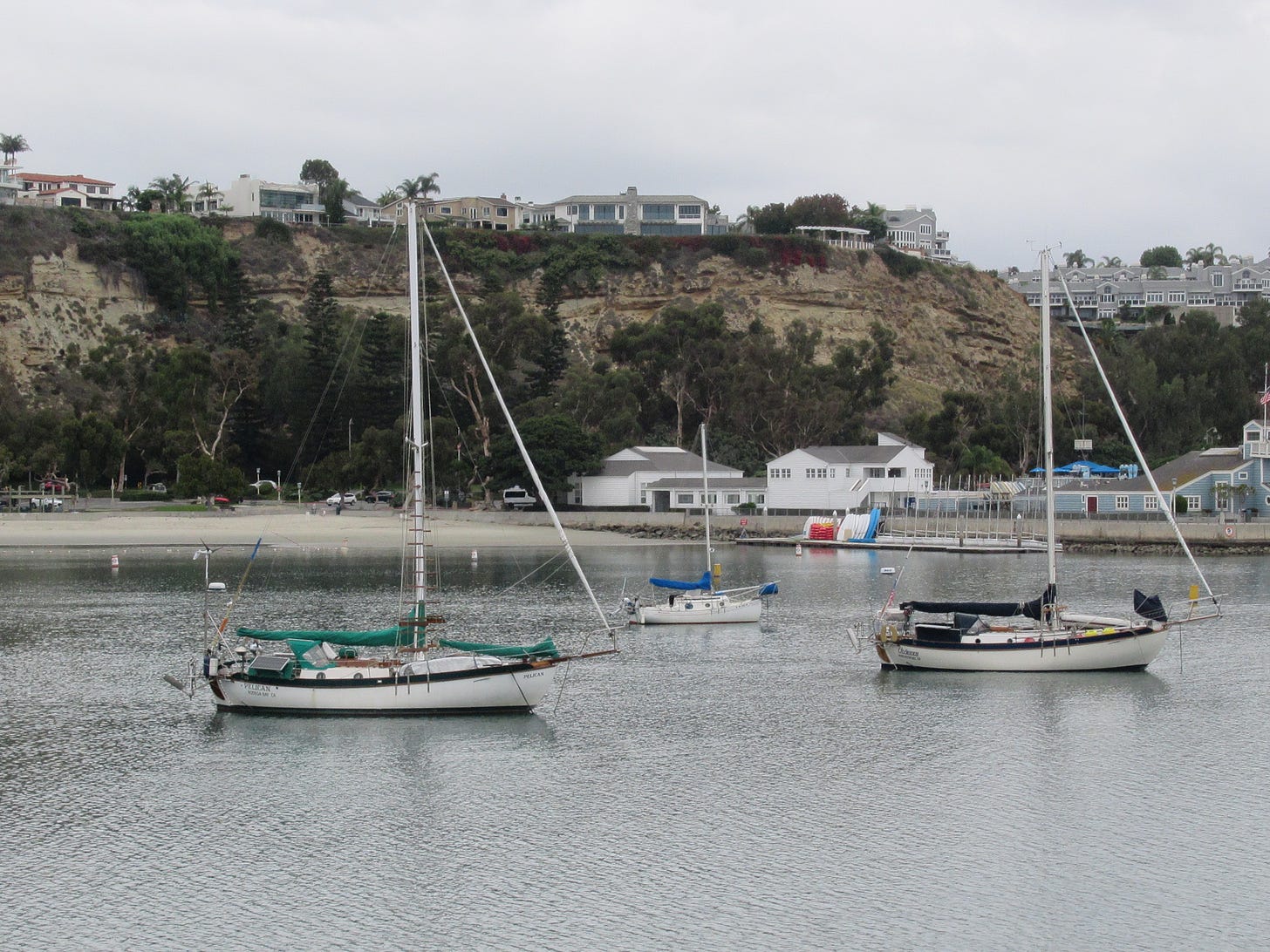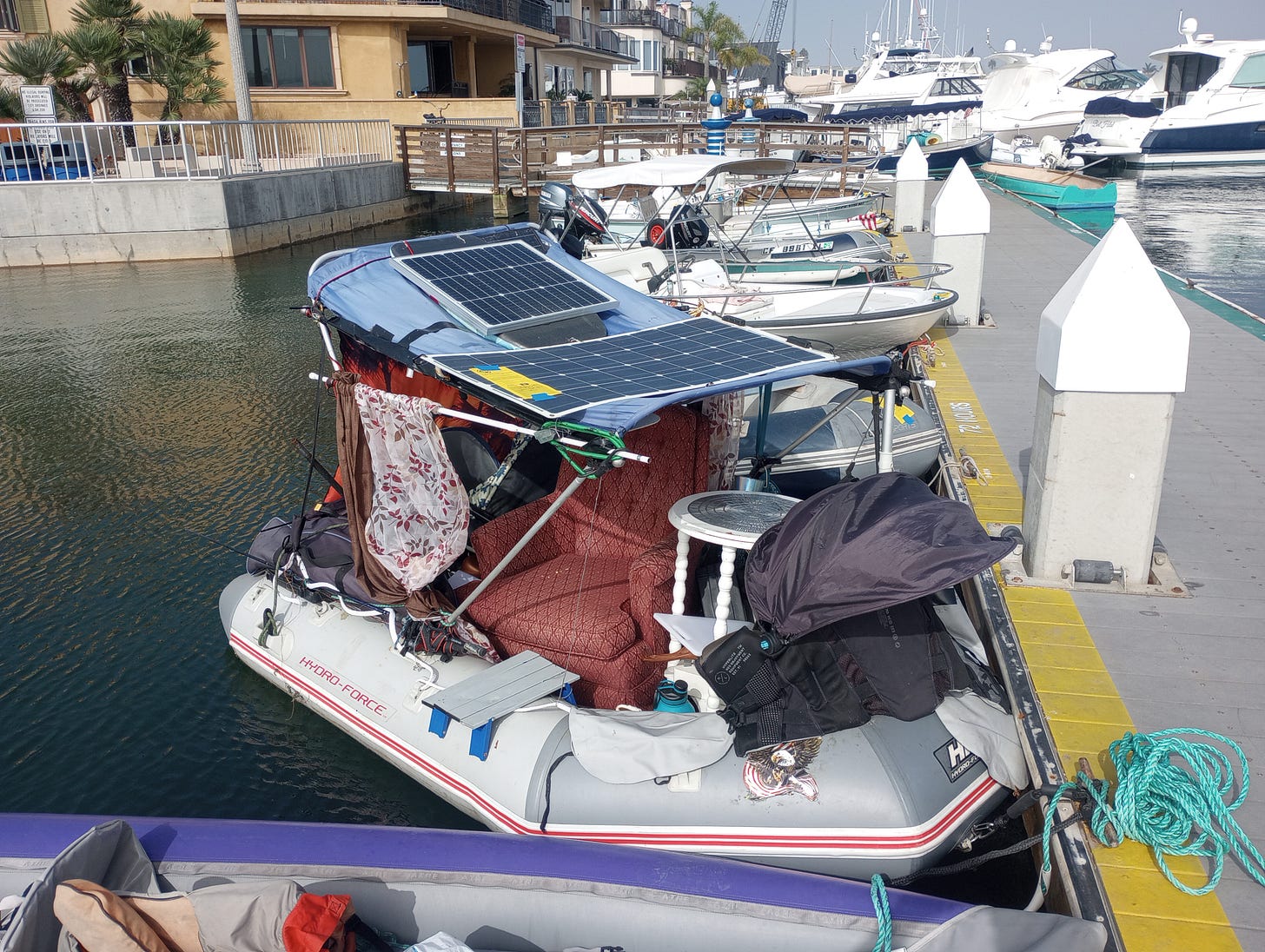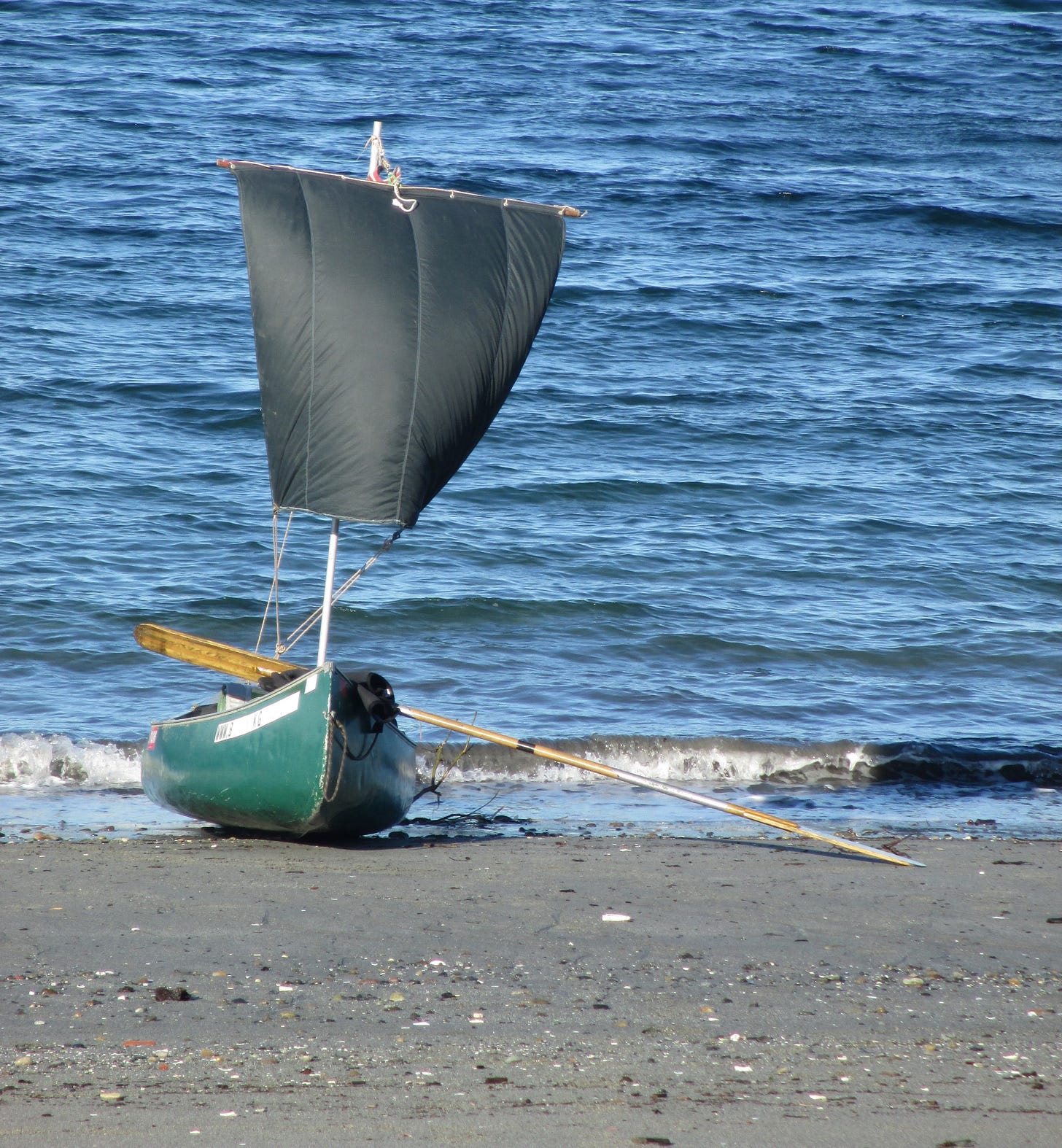The Resourceful Sailor Asks “Does Size Matter?”
There are definite advantages and disadvantages to boat size, whether small or large.
Article by Joshua Wheeler
The Resourceful Sailor isn’t going to give a diatribe about how having a small boat is better than having a bigger boat. He has a website with a page dedicated to the advantages and disadvantages of boat size found here, Small Boats and Big Boats – Advantages and Disadvantages? meant to be a conversation rather than flag planting. It’s for first-time prospective boat buyers to help them consider some variables when shopping. The right size boat for each someone is too complex and subjective to cover in any one article. It would only result in never-ending debate and head-shaking. Instead, the Resourceful Sailor will give a little brain food and background on his particular choices.

There are definite advantages and disadvantages to size, whether small or large. Some of these relate to material concerns like slip availability, slip costs, and maintenance costs. (Regardless, it will cost.) Some are psychological, like comfort, perceived safety, and maintaining happy relationships. Performance issues, including speed, ease of maneuvering, and load-carrying capabilities matter too. And then there is the program. Is it for living, racing, cruising, weekends, or show? The truth is, all boats are compromises in some fashion. Part of the boating journey is figuring it out and finding what’s best for you and your situation. If this doesn’t sound like fun to you, I would suggest taking up knitting instead.
For some, there are financial constraints. Upkeep of a forty-foot boat doesn’t cost twice as much as a twenty-foot boat. You have to think more non-linearly. This requires thoughtful, well-researched, and calculated decisions for sustainability’s sake. Not very romantic, I know. On the other hand, money is less of a concern for some. They can be a bit riskier in their approach, can pay more for help, and a poor decision is less likely to sink them (pun intended) financially.

My observation is many boat buyers do not get it right the first time. Romanticism overrides pragmatism. Sailboats are a romantic idea and often entrance the newbie (the most expensive way to get someplace for free), but it might be that a power boat is the right choice. (Did a sailboater just say that?) For example, if you dream of cruising the Inside Passage to Alaska and back, I might suggest considering a thirty-foot-ish Nordic Tug-type power boat. If you are on a schedule, the wind conditions may often have you motoring much of the way. You could buy something smaller, more comfortable, and spacious and avoid paying for the hardly-used sails and rigging. Your fuel costs will likely be similar.
Physical physique also matters. I’ve had a 6-foot-6-inch-tall man come up to me at the dock and talk about how he would love to buy a Flicka 20. It’s a smart-looking boat with a good reputation, and the size appeals to the economy-minded. (Though they are one of the more expensive twenty-foot sailboats you can buy.) I returned, “I don’t think it’s the right boat for someone your size. I don’t think you’ll be comfortable inside. You’ll have difficulty getting around on deck, and weight distribution matters.” Pragmatism at its finest.
Maybe you’ve heard of two foot-itis? The condition of someone looking for a little more room than they have. As a Flicka 20 owner, I had the typical Dana 24 envy, also a Pacific Seacraft. But I am well aware that, especially in that case, 20% more boat costs far more than 20%.
Sampaguita is only The Resourceful Sailor’s second sailboat if you don’t count the 60’s era Grumman canoe, Different Drummer, even though it was rigged with a downwind square sail. My first sailboat was a 1966 Columbia 26, Lark. You could say I bucked the trend of going bigger. But regarding space, it was really a sideways move. The Flicka 20 had as much space inside as the Columbia 26 because the layout was more accommodating and usable. At 5 feet 10 inches, I could stand up straight in a Flicka while I could not in the Columbia. This attribute increased its livability and comfort.
I was a latecomer to boating. My first real sailing experience didn’t come until my mid-thirties, and I was nearly forty before I bought the Columbia. That first sailing experience was on a friend’s ten-foot O’Day Sprite named 50 Bucks (because that’s what it cost), powered only by sails and oars. It was a two-week voyage down the Hudson River, around the tip of Manhattan, up the East River, into Long Island Sound. There were two of us, and we guerilla camped along the shores when the tide was against us. You could say The Resourceful Sailor was Spartan from the start.
Until then I was conditioned, like so many non-boaters of low-to-modest means, to think that boating was expensive and for the elite. In hindsight, it was fortuitous that this was my first experience because I realized that it was something I could actually participate in. If that voyage had been on a high-end yacht (ha, like I knew anyone like that) I might have thought it was cool (or not,) but out of my reach.
When I bought the Columbia 26 for $900 in 2010, it was an affordable starter boat, simple and small enough to wrap my novice head around. My first time operating an outboard motor was the first time out of the slip. I trained with that boat until I outgrew its seaworthiness (it had a leaky keel and a J24 mainsail,) at which time I set out to find my next boat. I wasn’t committed from the start to buying a Flicka 20. I looked at Westsail 32s, Dana 24s, and Orions. I dreamed of a Bristol Channel Cutter. But pragmatism and opportunity ruled, and I bought Sampaguita in February 2013. Those bigger boats scared me financially, and the learning curve of so much boat overwhelmed me. A Flicka 20 was the small but strong choice.
In preparing for my recent voyage down the West Coast, to the Marquesas Islands, and back to Port Townsend, I had to decide whether to invest in refitting Sampaguita or buy a different and bigger boat. Refitting Sampaguita was the value choice. A larger boat would not guarantee success, and I owned her already. I had spent ten years learning, understanding, and sailing her. I knew Sampaguita well, so changing boats would discard much of that knowledge.
That’s just a taste of The Resourceful Sailor’s story and insight into why size matters to him. I recognize I’ll never get those big boat girls, but I wouldn’t be able to keep up with them either. Your own criteria will determine how size matters to you. Like most things in life, be thoughtful and do your research. Remember, keep your decisions safe and prudent, and have a blast. Or take up knitting instead.
I invite you to join the conversation “Small Boats and Big Boats – Advantages and Disadvantages?“
SPECIAL LIVE EVENT
Sailing With Josh & The Resourceful Sailor Present: A Flicka 20’s Pacific Odyssey
Wednesday, March 12, 2025
• 5:30pm – FOOD/SNACKS
• 6:00pm – SHOW
• 7:30pm – RECEPTION
FREE FOR EVERYONE!
@ The Port Townsend Sailing Association Clubhouse – Nomura Building – 385 Benedict St. (Facing the Boat Haven parking lot)
Host: PTSA Beverages: Admiral Ship Supply
Britannica defines an odyssey as:
1. literary: a long journey full of adventures.
2. a series of experiences that give knowledge or understanding to someone.
In August 2023, Sampaguita, a 1985 Pacific Seacraft Flicka 20, and Joshua Wheeler embarked on an epic Pacific Ocean odyssey. Beginning and ending in Port Townsend, WA, they journeyed down the North American West Coast to Baja, Mexico, followed the trade winds to the Marquesas, and returned via Hawaii (sort of). Josh will share some places visited, wildlife encountered, psychological “research”, and equipment used in this single-handed voyage of a tiny boat on a big ocean.
Bio:
Joshua Wheeler has lived and sailed on small craft for over 15 years and 25,000 nautical miles. Credits include a 2019 transit of the Northwest Passage, two solo circumnavigations of Vancouver Island in 2018 and 2023, the Inside Passage to Alaska in 2022, and a Pacific tour in 2023-24. He’s held a USCG Master license and has a recurring column in Latitude 38’s ‘Lectronic Latitude called The Resourceful Sailor Series.
•SCA•



One of my Melonseed owners sent this comment to me years ago:
"The moral of this story is that if you have a big boat you have to spend so much time paying attention to sailing that you can’t play make believe. Where’s the fun in that?"
I agree with almost everything in this article except the powerboat comparison. I am getting older and actually considered a powerboat for cruising the PNW waters until I looked at purchase price and fuel costs…no way. Boat cost is more equated to weight than length, and a high quality 20’ powerboat might cost ten times as much as Sampaguita, and fuel costs would be exponentially higher to drive the correspondingly massive increase in displacement (when using a Nordic Tug as an example). The only advantages might be room inside and speed of passage…if you can somehow afford it.